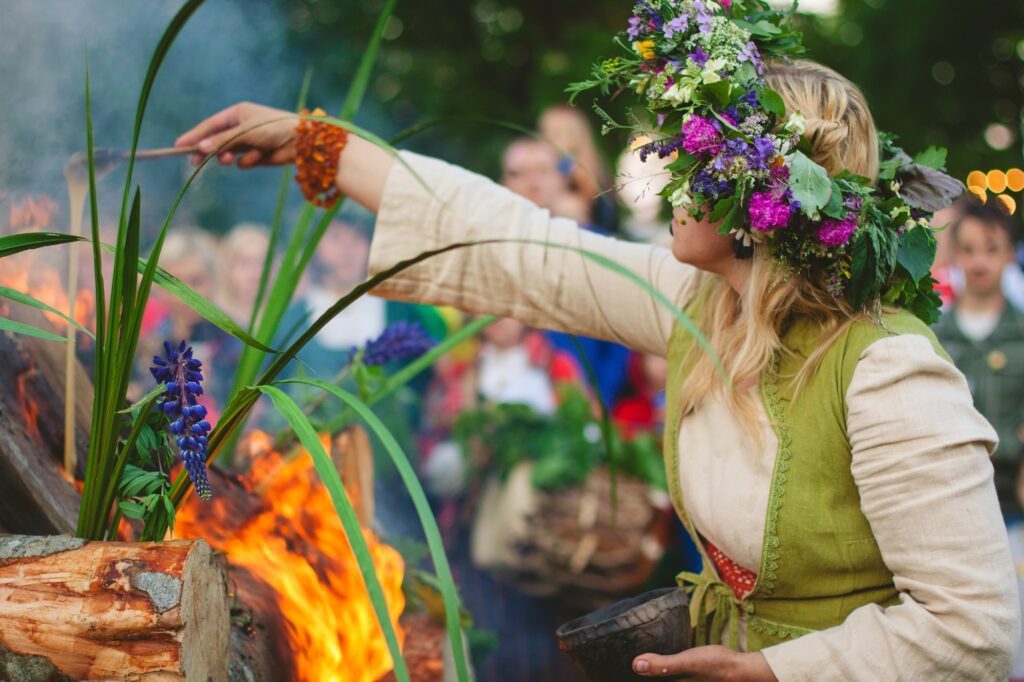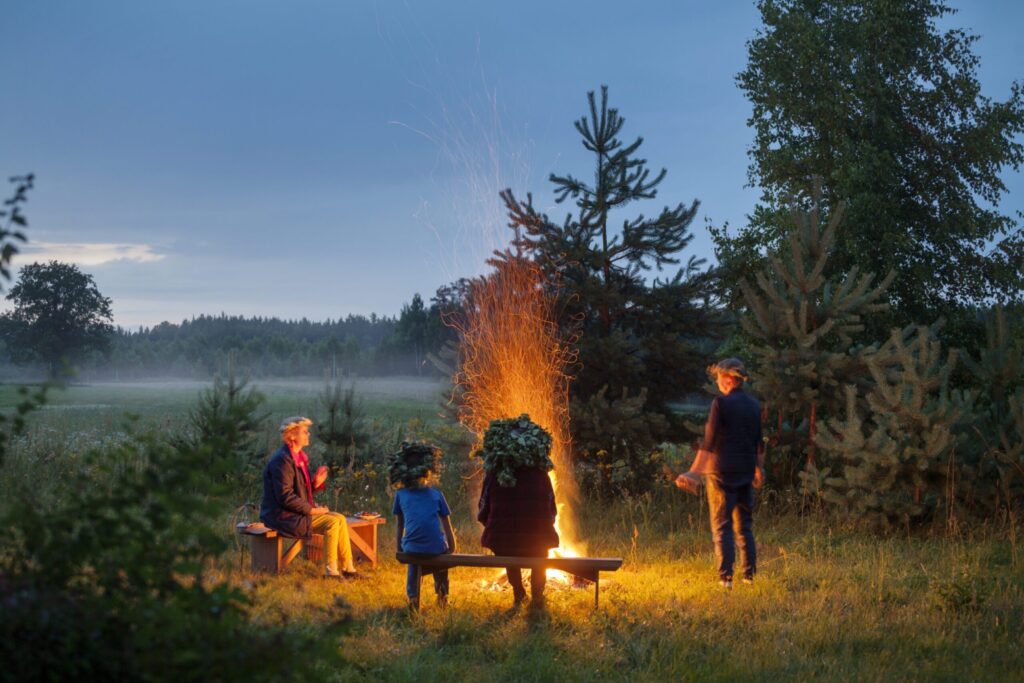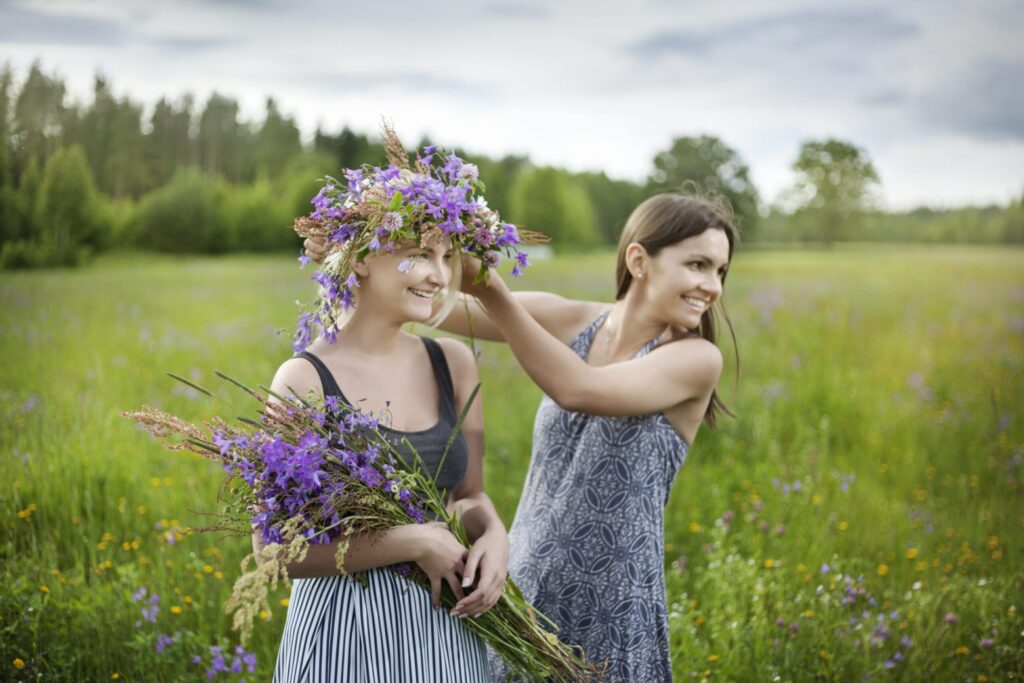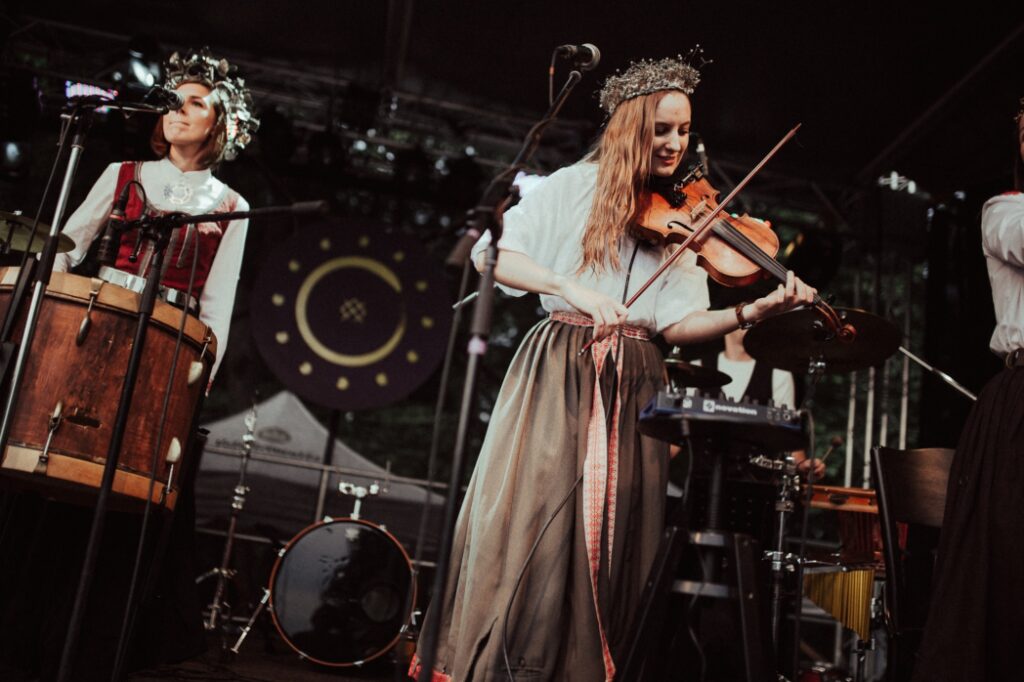
Midsummer festivities are very important and popular celebrations in the Baltic states. In Estonia and Latvia it’s one of the main holidays during the whole year, competing closely with Christmas. It coincides closely with the longest day of the year in the northern hemisphere – the summer solstice and every summer, St John’s Eve is celebrated on June 23 and St John’s Day on June 24. It is a celebration filled with fun activities, folk music, good food and company, traditions, magic, and romance. In Estonia the day is called Jaanipäev, in Latvia “Līgo” or “Jāņi“ and in Lithuania Joninės (or as it was once known, Rasos).
The holiday originates from ancient folk traditions and marks the break between the spring sowing and summer hay-making. Celebration started long before the arrival of Christianity in the Baltics and although it now has a Christian name, the pagan tradition is still alive and well today.

Midsummer traditions
There are many traditions the Baltic countries share but there are also some unique ones specific to a country and their beliefs.
The most popular ritual is the lighting of the bonfire and jumping over it. In Estonia this is seen as a way of guaranteeing prosperity, ensuring a good harvest and avoiding bad luck and frightening away mischievous spirits. In Latvia leaping over the bonfire is meant to rid people of their burdens. Couples leap holding hands, so that the magical force of the flames binds them together. In Lithuania jumping over the bonfire would cleanse you of bad luck, sins and illness.
For lovers, an important tradition is to go into the forest looking for the fern flower which according to old beliefs, only bloom on St John’s Eve. It’s very important to be fully focused on this mission, as if you get distracted you will miss your chance. The one who finds the fern flower will instantly gain wealth, find love, and will understand the secret languages of animals. No one ever has, but this is considered an excuse for couples to sneak away for some alone time in the woods. In Latvia, the flower is also considered a local symbol of fertility and babies born in spring (between late March and early April) are sometimes called the fern flowers. A coincidence?

Unmarried women who are looking to see their future love in their dreams or to predict when they would get married, are advised to collect nine different types of wildflowers. You should place the flowers under a pillow for the night and you will see your future love in your dream. If you’re looking forward to finding out when you will get married you need to make a wreath and throw it onto the tree branches. How many times the wreath falls to the ground, that many years you have left until you will marry. Or float them in a lake (if two wreaths stick together, wedding bells are expected within a year).
Another thing special about St John’s Day is the dawn. One must not sleep on that night! At dawn, one should walk through the morning dew – it has magical powers. It brings money and those who wash their face in the dew are guaranteed to gain beauty. If you go outside to wet your face in the dew and return to bed without wiping your face dry and if that night you dreamt of a young man bringing you a towel, you hoped that he would be the one you would marry.

Midsummer nowadays
Today, Midsummer is a national holiday giving city folks an opportunity to take a break in the countryside. People tend to spend the day with friends and family barbecuing in the garden or having a picnic in the wilderness. However, the tradition of village parties featuring bands playing around massive bonfires hasn’t gone anywhere, proving to be the highlight event in many rural towns and villages.
Where to celebrate Midsummer as a tourist?
If you’re visiting capital cities and still want to take part in the Midsummer celebrations then Riga and Tallinn are good places for you to experience the festivities. In Riga there are a few markets taking place during the week. For example at the Dome Square a traditional market where farmers and craftsmen will sell different products takes place. You can buy flower bunches and garlands, oak leaf crowns, and of course different foods from cheese to smoked meat and warm pastries. Also Kalnciems quarter has a similar market for you to check out. Head to Mežaparks if you’d like to celebrate Līgo with music and dancing
In Tallinn you can check out the Open Air Museums for different events. At the Estonian Open-Air Museum different events take place every year. There you can listen to Estonian folk music, make wreaths, watch the bonfire lighting ceremony, eat and dance. At the Viimsi Open-Air Museum exciting and traditional Midsummer games will take place and of course different bands will play throughout the evening.
If you’d like to visit the Baltic States during midsummer check our calendar for available tours or ask for a personalised offer.
